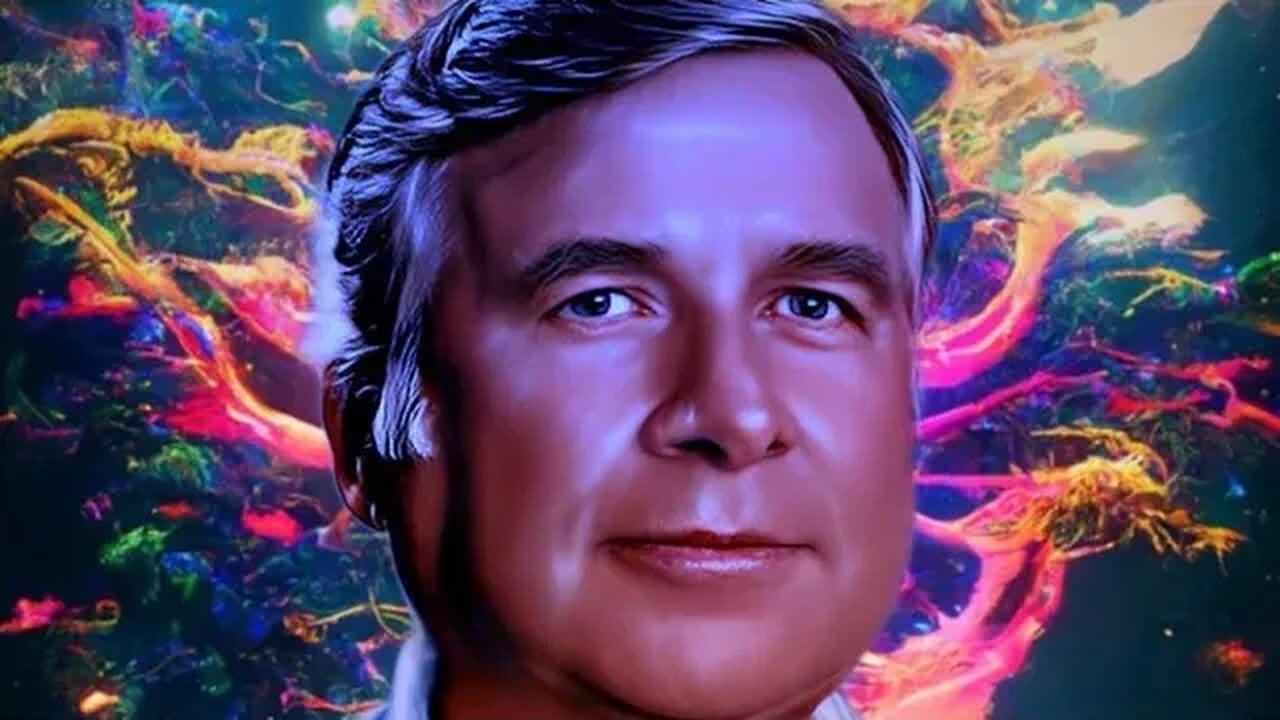Premium Only Content

Gene Roddenberry: The Final Frontier
In September 1987, Star Trek: The Next Generation continued the legend that Gene Roddenberry began 25 years prior. As creator and producer of the original Star Trek television series, he launched a phenomenon without precedent in show business and attained a celebrity status unique among his peers.
Although Gene Roddenberry passed away October 24, 1991, his legacy remains as Star Trek: The Next Generation continues to flourish and grow in movie theaters, and three television series based upon Star Trek — Star Trek: Deep Space Nine, Star Trek: Voyager, and now Enterprise — maintain his vision of the future.
While making Star Trek, Roddenberry's reputation as a futurist began to grow. His papers and lectures earned him high professional regard as a visionary. He spoke on the subject at NASA meetings, the Smithsonian Institution, Library of Congress gatherings, and top universities.
As creator of the beloved Starship Enterprise and its crew, which included the heroic Captain Kirk and the logical Vulcan, Mr. Spock, Roddenberry unwittingly unleashed a phenomenon in which Star Trek enthusiasts became a veritable cult, numbering physicists, aerospace engineers, housewives, senators, children, teachers and intellectuals among its devotees (affectionately known as "Trekkies," and later, "Trekkers"). The show went outside television to win science fiction's coveted Hugo Award and then spawned an animated spin-off, as well as a series of feature films.
Gene Roddenberry led a life as colorful and exciting as almost any high-adventure fiction. He was born in El Paso, Texas, on August 19, 1921, spent his boyhood in Los Angeles, studied three years of policemanship and then transferred his academic interest to aeronautical engineering and qualified for a pilot's license. He volunteered for the U.S. Army Air Corps in the fall of 1941 and was ordered into training as a flying cadet when the United States entered World War II.
Emerging from Kelly Field, Texas, as a Second Lieutenant, Roddenberry was sent to the South Pacific where he entered combat at Guadalcanal, flying B-17 bombers out of the newly-captured Japanese airstrip, which became Henderson Field. He flew missions against enemy strongholds at Bougainville and participated in the Munda invasion. In all, he took part in approximately 89 missions and sorties. He was decorated with the Distinguished Flying Cross and the Air Medal.
While in the South Pacific, he also began to write. He sold stories to flying magazines, and later poetry to publications, including The New York Times. Upon his return from combat, he became a trouble-shooter for the Air Force working out of Washington, D.C., investigating the causes of air crashes. At war's end, he joined Pan American World Airways. During this time, he also studied literature at Columbia University.
It was on a flight from Calcutta that his plane lost two engines and caught fire in mid-air, crashing at night in the Syrian desert. As the senior surviving officer, Roddenberry sent two Englishmen swimming across the Euphrates River in quest of the source of a light he had observed just prior to the crash. Meanwhile, he parleyed with nomads who had come to loot the dead. The Englishmen reached a Syrian military outpost, which sent a small plane to investigate. Roddenberry returned with the small plane to the outpost, where he broadcast a message that was relayed to Pan Am, which sent a stretcher plane to the rescue. Roddenberry later received a Civil Aeronautics commendation for his efforts during and after the crash.
Back in the States, Roddenberry continued flying until he saw television for the first time. Correctly estimating television's future, he realized that the new medium would need writers and decided that Hollywood's film studios would soon dominate the new industry. He acted immediately, left his flying career behind and went to Hollywood, only to find the television industry still in its infancy, with few openings for inexperienced writers. At a friend's suggestion, he joined the Los Angeles Police Department, following in his father's footsteps and gaining experiences which would be valuable to a writer.
Star Trek followed (1966-1969). The first of the two pilots was pronounced "too cerebral" by the network and rejected. Once on the air, however, Star Trek developed a loyal following and has since become the first television series to have an episode preserved in the Smithsonian, where an 11-foot model of the U.S.S. Enterprise is also exhibited on the same floor as the Wright brother's original airplane and Lindbergh's "Spirit of St. Louis."
The legacy of Star Trek, as created by Gene Roddenberry, continues to grow as the newest series, Enterprise, joins Star Trek: Deep Space Nine and Star Trek: Voyager. Star Trek: The Next Generation has evolved into a feature film series, debuting in 1994 with "Star Trek Generations." Roddenberry is often affectionately referred to as the "Great Bird of the Galaxy."
-
 1:00
1:00
Literati
1 year ago $0.02 earnedHugh Everett Speaks
107 -
 LIVE
LIVE
Dear America
2 hours agoNo More IRS!! Tariffs Bring In Over $500 BILLION! + Taylor Swift Got ENGAGED… This Is A Nightmare!!
2,825 watching -
 LIVE
LIVE
Wendy Bell Radio
6 hours agoTrump Cracks The Barrel
8,020 watching -
 LIVE
LIVE
Badlands Media
9 hours agoBadlands Daily: August 27, 2025
2,980 watching -
 LIVE
LIVE
Law&Crime
1 hour agoLIVE: Adelson Matriarch Murder Trial — FL v. Donna Adelson — Day 4
219 watching -
 LIVE
LIVE
Major League Fishing
5 days agoLIVE! - Fishing Clash Team Series: Challenge Cup - Day 4
119 watching -
 1:03:42
1:03:42
Crypto Power Hour
2 hours agoWhat Coins Are The Backbone of The New Digital Revolution?
2.18K5 -
 LIVE
LIVE
LFA TV
3 hours agoLFA TV ALL DAY STREAM - WEDNESDAY 8/27/25
5,418 watching -
 1:22:55
1:22:55
Game On!
19 hours ago $2.62 earnedBREAKING NFL NEWS: Taylor Swift and Travis Kelce Are Engaged!
39.3K12 -
 41:04
41:04
Coin Stories with Natalie Brunell
1 day agoCooking, Culture & Crypto: Norma Chu’s Food Empire Turns Bitcoin Treasury
35.4K